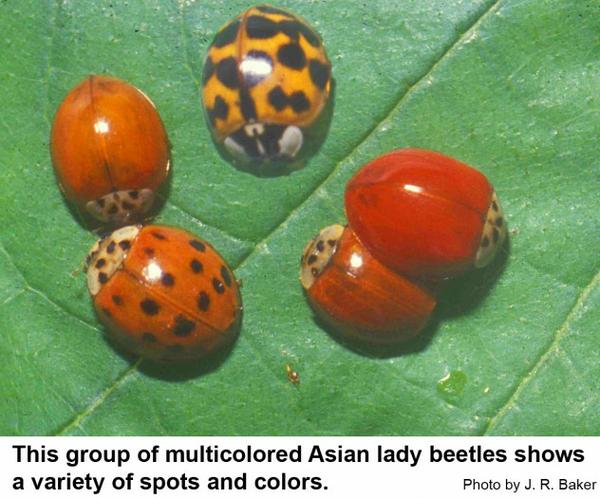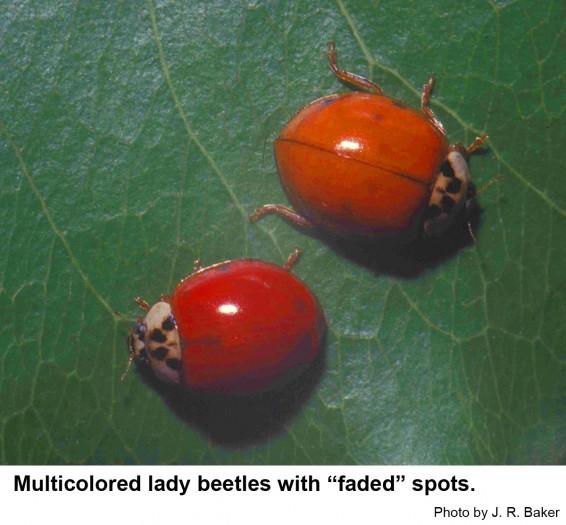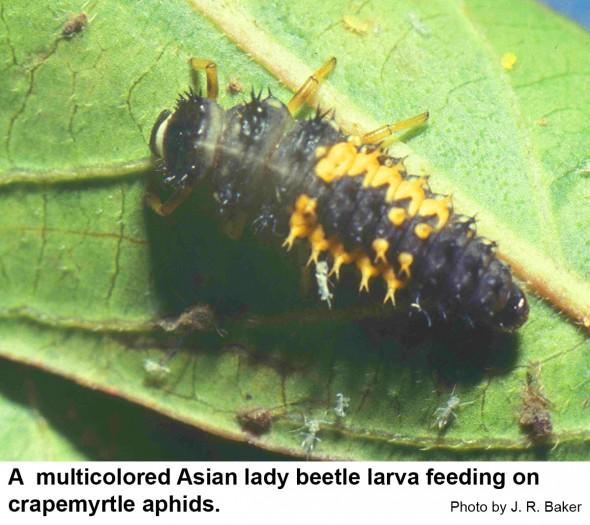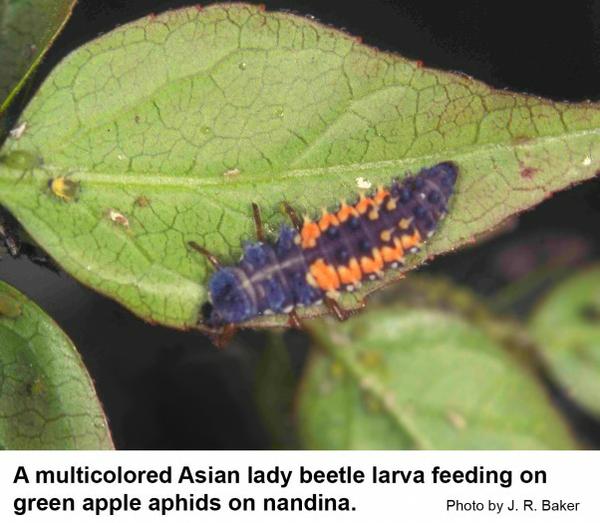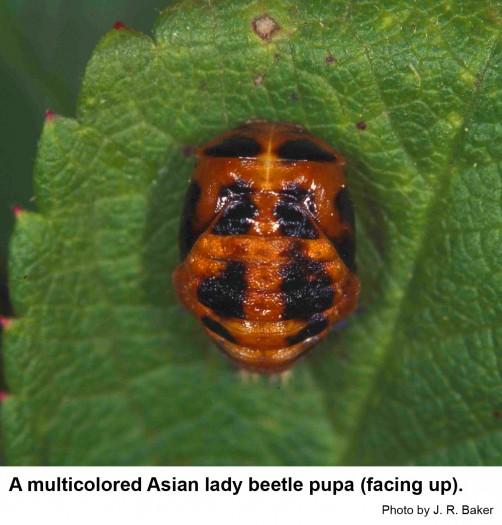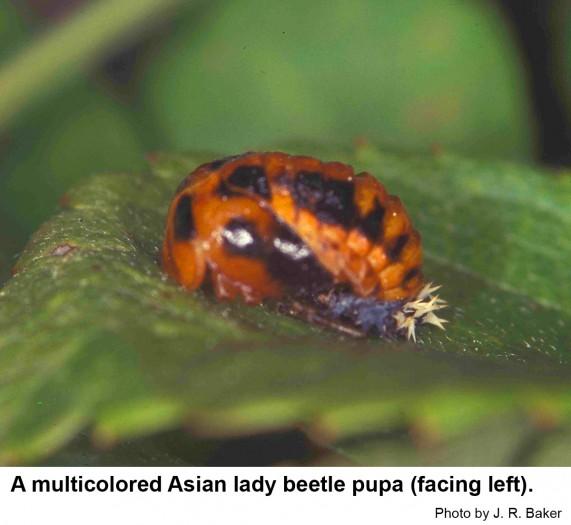Description and Biology
Multi-colored Asian lady beetles, Harmonia axyridis, are about 1/4 inch long. They vary greatly in appearance. Some have yellowish or orange forewings. Some have beige forewings and there are some bright reddish orange Harmonia lady beetles. They usually have 10 black spots on the forewings, but some have fewer spots or have small, faded spots, and some have no spots at all. The larvae are small, alligator-shaped, spiny black and yellow insects that feed voraciously on aphids and other insects too slow to get out of the way. During the spring and summer, Harmonia lady beetles feed on aphids in gardens, meadows and trees. This Asian species was introduced into California in 1916 and into the rest of the United States and parts of Canada from 1978 to 1982. Releases were also made in Georgia, Louisiana, Mississippi, Maryland, Connecticut, and Delaware. For several years afterward Harmonia lady beetles could not be found and were thought to have failed to establish. It is thought that our current Harmonia descended from those released in 1978-82. Some thought those died out and the multi-colored Asian lady beetles troubling folks now descended from an accidental introduction into New Orleans in 1987 or '88.
Habitat
During the spring and summer, multi-colored Asian lady beetles feed on aphids in gardens, meadows, and trees. But in the fall, they sometimes congregate on the sunny sides of houses and on porches or in garages. As the afternoons cool off, some of these beetles make they way indoors. If squashed the beetles may stain fabric and painted surfaces. Some people have reported receiving a mild "nip" by beetles that have landed on them. Allergists are concerned that large numbers of beetles may possibly cause air quality problems indoors that could trigger allergies and/or asthmatic reactions.
Residential Recommendation
It is amazing how little tolerance many people have to lady beetles inside the house. Folks love them in the garden but hate them inside. We do not recommend spraying Harmonia lady beetles. It is better to gently sweep them up and return them outdoors. If large numbers of these insects continue to invade a house, it probably means that the weatherstripping around the doors and windows needs repair. One encouraging aspect of multicolored Asian lady beetle biology is that they are victims of various predators and parasites so that a population may be locally abundant, but after a year or two, the numbers of Harmonia lady beetles drops off dramatically.
References
- Common name: multicolored Asian lady beetle, scientific name: Harmonia axyridis Pallas (Insecta: Coleoptera: Coccinellidae). Mizell, R. F. 2001. Featured Creatures. Entomology & Nematology, FDACS/DPI, EDIS, Pub. No. EENY-204.
- Multi-Colored Asian Lady Beetle Allergy: What to Know. Anonymous. 2023. Allergy Partners.
- Multicolored Asian Lady Beetle Inside Houses. Waldvogel, M. et al. 2018. Household Pests, NC State Extension Publications.
- Extension Plant Pathology Publications and Factsheets
- Horticultural Science Publications
- North Carolina Agricultural Chemicals Manual
For assistance with a specific problem, contact your local N.C. Cooperative Extension Center.
This Factsheet has not been peer reviewed.
Publication date: Dec. 2, 2013
Reviewed/Revised: Nov. 3, 2023
Recommendations for the use of agricultural chemicals are included in this publication as a convenience to the reader. The use of brand names and any mention or listing of commercial products or services in this publication does not imply endorsement by NC State University or N.C. A&T State University nor discrimination against similar products or services not mentioned. Individuals who use agricultural chemicals are responsible for ensuring that the intended use complies with current regulations and conforms to the product label. Be sure to obtain current information about usage regulations and examine a current product label before applying any chemical. For assistance, contact your local N.C. Cooperative Extension county center.
N.C. Cooperative Extension prohibits discrimination and harassment regardless of age, color, disability, family and marital status, gender identity, national origin, political beliefs, race, religion, sex (including pregnancy), sexual orientation and veteran status.

